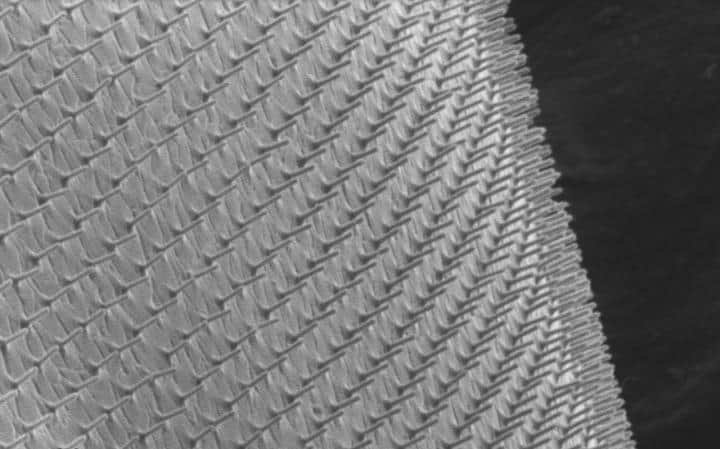
According to the researchers, skin cancer is a prime candidate for treatment with the patch. The silicon needles have a diameter 100 times smaller than that of a mosquito, allowing for ultra-precise penetration that leaves individual cells intact.
"This means that eight or nine silicon nanoneedles can be injected into a single cell without significantly damaging a cell,” said Chi Hwan Lee, an assistant professor in Purdue University's Weldon School of Biomedical Engineering and School of Mechanical Engineering. “So we can use these nanoneedles to deliver biomolecules into cells or even tissues with minimal invasiveness."
Commercially available nanoneedle patches are usually constructed on a rigid and opaque silicon wafer. However, this rigidity can cause discomfort, preventing extended use. What’s more, observation of the skin beneath is obscured, making it difficult to track the efficacy of the treatment.
"To tackle this problem, we developed a method that enables physical transfer of vertically ordered silicon nanoneedles from their original silicon wafer to a bio-patch," said Lee. "This nanoneedle patch is not only flexible but also transparent, and therefore can also allow simultaneous real-time observation of the interaction between cells and nanoneedles.”
The patch was fabricated using a photolithographic patterning and deep reactive ion etching (DRIE) process. Lee said the researchers hope to develop its functionality so it can act as an external skin patch, lowering the pain, invasiveness and toxicity associated with long-term drug delivery. In the technology's next iterations, the researchers plan to test the patch's operational validity and capabilities monitoring cellular electrical activity or treating cancerous tissue.
The research, published in Science Advances, received joint support from the United States Air Force Office of Scientific Research and the Korean Ministry of Science and ICT.




Project to investigate hybrid approach to titanium manufacturing
What is this a hybrid of? Superplastic forming tends to be performed slowly as otherwise the behaviour is the hot creep that typifies hot...